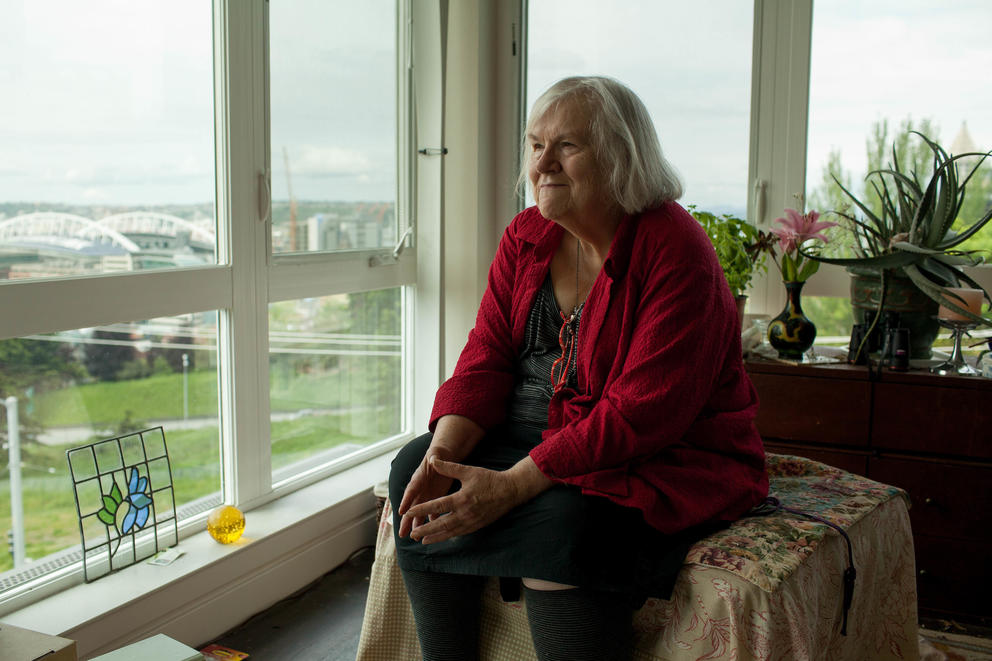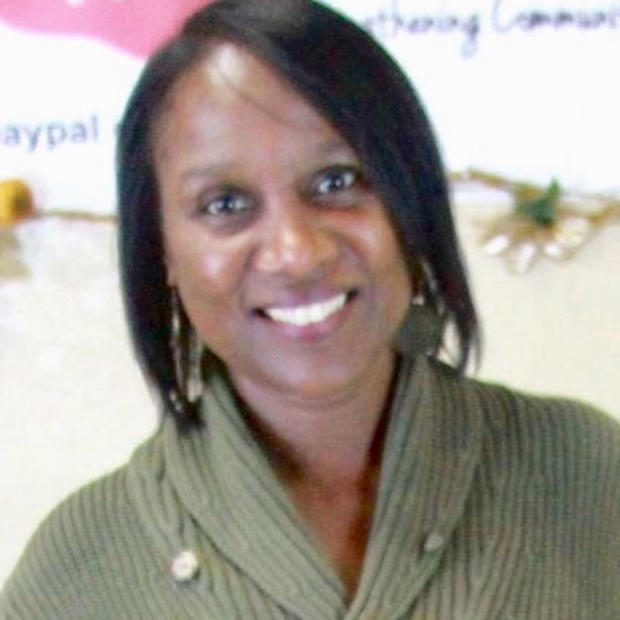Looking out the floor-to-ceiling windows of her Raven Terrace corner apartment, Kristin O’Donnell can now see the jagged snowcapped outline of the Olympic Mountains. Swivel left, and there’s Mount Rainier.
In her old Yesler Terrace townhome, her view was of the red, neon Wonder Bread sign.
O’Donnell, who has lived more than 40 years at Yesler Terrace where she chairs the community council, often gives public voice to residents’ private concerns about neighborhood problems.
“I don’t think I’ll ever get over having a little garden, or people here with children not having a backyard,” the 76-year-old said. “There’s no amenity to replace that.”
But of her new, modern unit with its spectacular view, she added grudgingly, “I do have to say it’s pretty nice.”
O’Donnell and other original residents returned to a Yesler Terrace where construction cranes arch overhead and half-finished buildings hug the hillside – a $1.7 billion redevelopment that will fundamentally change the character, energy and face of the old neighborhood.
Gone are half of the 560 drab blue-gray townhouses, sprawled over 33 acres that for seven decades were home to some of Seattle’s poorest families. They will be replaced by a campus of mid-rise buildings that will house more than five times as many people as Yesler did before and in a range of income brackets — rich and poor.
A total of 618 residents are already living in new Yesler buildings.
Built in 1941 as the nation’s first racially integrated community, Yesler is being converted into a public/private, mixed-income, mixed-use neighborhood of 5,000 one-, two- and three-bedroom apartments, some studios, some townhouses and space for retail stores and offices.
The redevelopment includes a new 1.7-acre park, gardening plots, a pedestrian walkway snaking through the neighborhood and a community kitchen, among other amenities. A decorative hill climb connects the neighborhood with Little Saigon.
“One of the criticisms had been, ‘they’ll relegate us to the ground floor and give all the view to the rich people,” said Kerry Coughlin, spokeswoman for the Seattle Housing Authority (SHA).
“Obviously that hasn’t happened…”
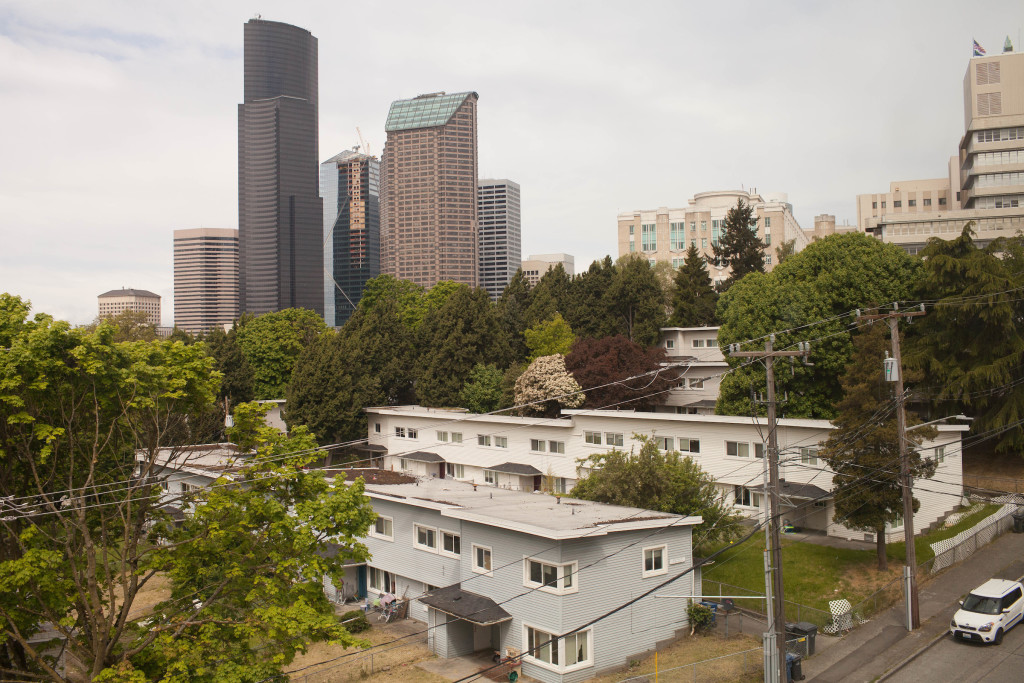
In a documentary about Yesler Terrace called Even The Walls, longtime residents speak of the coming changes with foreboding.
They talk about watching neighborhood children play ball from their front yards. Many now fret that a new community of apartment towers doesn’t feel like a place for families with children.
Some now say SHA’s decision not to re-rent some blocks of units that aren’t due for demolition for years is a safety issue because the units are susceptible to break-ins. What’s more, there are homeless people who could use them given the city’s current housing crisis, said Michael Grossman, who moved into Yesler for the first time last year.
But SHA officials say that those units are being reserved for residents as they're moved out of units that are slated for demolition. And they have security officers patrolling the area.
Even The Walls was produced in 2014, a year after the buildings started coming down. It was screened at film festivals across the country, as well as overseas, and has won several awards, including at the Seattle International Film Festival in 2015. It will air at 5 p.m. on May 21 on KCTS9.
“In Yesler, your next door neighbor was your best friend; you watched out for each other,” said Marty “Buddy” Reyes, 86, who is featured in the documentary.
Reyes, who first moved to Yesler 70 years ago, taught neighborhood kids to play baseball. Down the hill in nearby Chinatown, he got to know a karate teacher named Bruce Lee.
When the demolition crew came for his home, he relocated to New Holly in Southeast Seattle, where he got another townhouse with a backyard and a wheelchair ramp for his wife.
He had every intention of coming back to Yesler until he toured one of the new apartment buildings and realized it wasn’t a good fit for his wheelchair-bound wife.
“I have tears just thinking about it now,” said Reyes in a recent interview. “I finally had to admit that I’m old… It’s much easier for me to stay where I am.”
Aware of residents’ concerns about the loss of community, Coughlin said SHA put a lot of thought into designing a neighborhood that would foster continuity and neighborliness.
“Of course it’s not perfect, but there are some really well-thought-out amenities to promote community engagement,” she said.
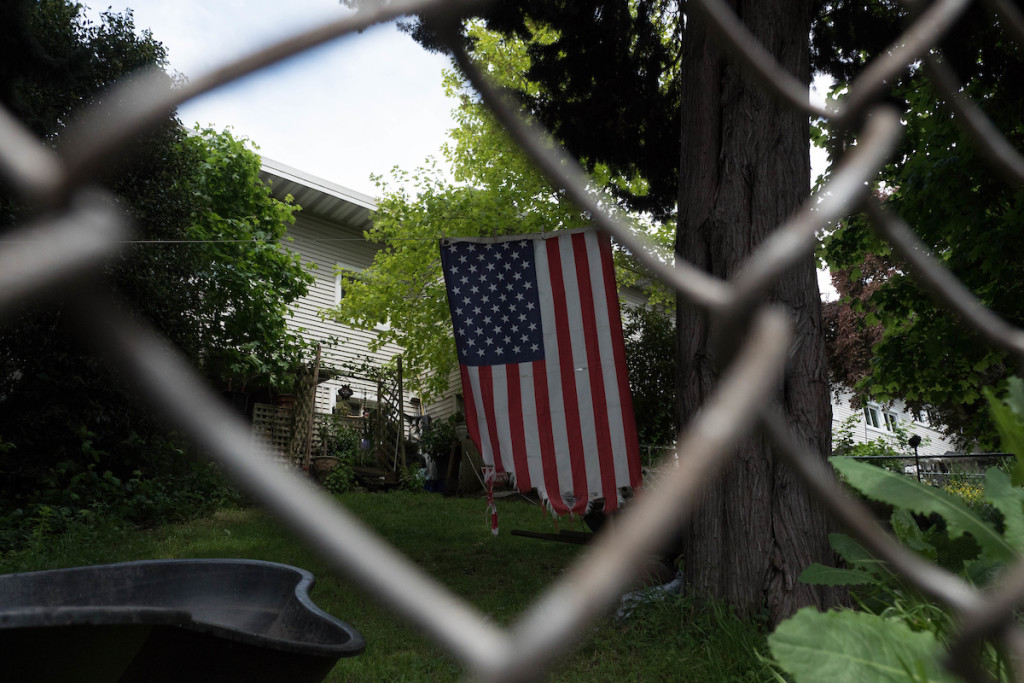
Yesler Hill was a village of derelict homes, bordellos and other small businesses that Seattle Housing Authority leveled in the early 1940s to make way for the state’s first public housing project.
With views of Mount Rainier and Elliott Bay and the Olympics beyond, the development’s unique design of townhomes around open space, either with private balconies or yards, was considered a national model.
For generations of Seattle families, it was not only a first step or temporary sanctuary during hard spells – and sometimes not so temporary – but a community where people from different backgrounds could get to know one another.
It was a place where many refugees and immigrants got their start and at various times was home to former Washington State Governor Gary Locke, music legend Jimi Hendrix and a retired anthropologist named Jean Harris.
Harris, 74, is writing a book about the early residents of “the Terrace.”
She has fond memories of her years spent there, where she moved with her family when she was six and maintains cherished friendships with many of the people she met there.
The income-eligibility criteria SHA used, she said, meant that “people who might not have associated with each other were thrown together.
“People who looked different were all here for the same reason: safe, clean, affordable housing. And even if they came from a privileged background, for that period of time, they were all income qualified.”
After decades of talk about replacing the crumbling complex, redevelopment plans for Yesler began in earnest in 2006 and construction in 2013.
Funding for the redevelopment project is coming from a variety of sources, including the City of Seattle and the sale of private land and low-income housing tax credit, the federal government’s primary program to build housing for the poor.
In exchange for Seattle’s multi-family tax exemption, private developers who participate in the project must commit a portion of their units to so-called workforce housing. A family of four, for example, would have to be earning between $62,400 and $76,800 a year to qualify.
Yesler isn’t SHA’s first mixed-income development. But the others, which include Rainier Vista, New Holly and High Point, involve homeownership; Yesler is 100 percent rental.
SHA is replacing all 561 of its original low-income housing units there, which are available to people earning 30 percent or less of the area’s median income. That means to qualify in 2017, a family of four can’t earn more than $28,800 a year. They will pay around $630 to rent a two-bedroom apartment, an amount that will adjust if their income goes up or down.
Another 290 units in the community will be available to families who make up to $57,600, and 795 units will be for those with incomes of up to $76,800. Rents in these units will not fluctuate with changes in income.
Some 2,352 units will be available at market rate.
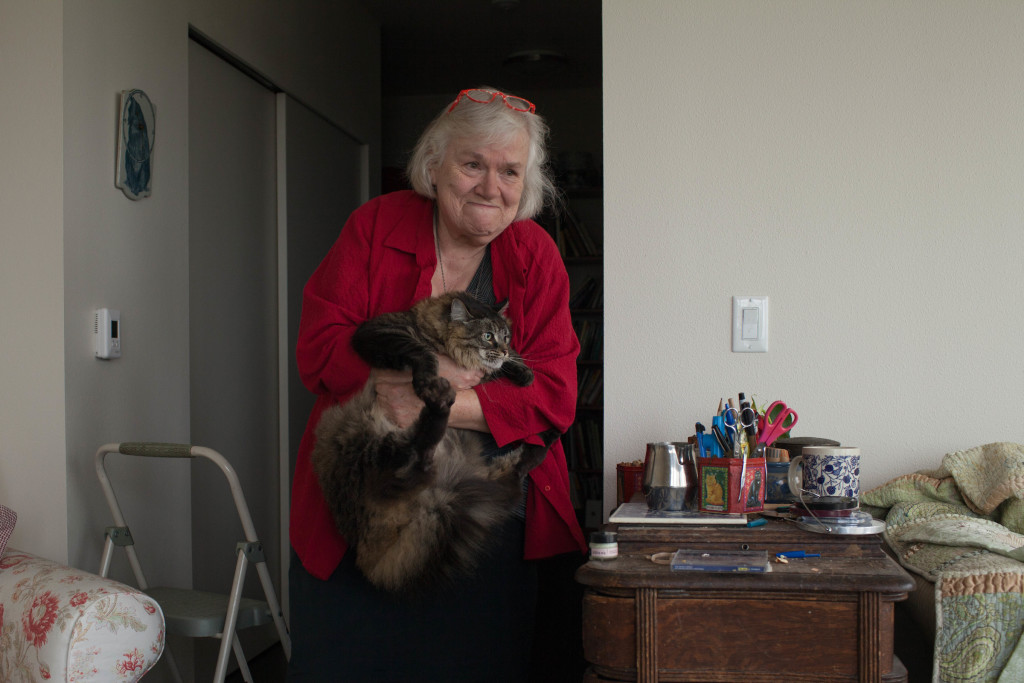
While some Yesler residents have chosen to stay, others are leaving. Still, others are weighing their options.
Fadumo Isaq, who many know as Mama Fadumo, still isn’t sure if she’ll move back from High Point in West Seattle where she relocated.
Yesler was her first connection to the United States when she moved to this country from Ethiopia 17 years ago. She raised seven children and operated a day care center there like several families do.
But she doesn’t like how constrained life would be in the new community. In its secured buildings, her keycard wouldn’t allow her to visit friends in different buildings on a whim, and that, for her, might be a deal breaker.
Housing officials said while tenants voted overwhelmingly to keep the restricted access, they say individual residents may request access to different floors within their buildings to visit friends.
“In my culture, we need to socialize with each other,” she said. “I wouldn’t be able to knock on my friend’s door and drink coffee together.”
At High Point, she has already “made lots of friends and is organizing the community. But I miss my friends at Yesler.”
In the meantime, O’Donnell, the longtime resident and community connector, is trying to find ways for everyone to benefit from Yesler’s new status. She believes new residents with higher disposable incomes will attract better services to the neighborhood.
Internet service providers, for example, will be more inclined to bring quality, high-speed service to a neighborhood where everyone isn’t eligible for a discount. And the city might be open to extending park services and programs that more residents can afford to pay for.
To remain viable, a neighborhood needs a core of concerned neighbors, she said. She invites everyone to council meetings, including residents of adjacent communities on First Hill.
“I imagine some of them will be interested in joining us to keep this a good place to live,” she said.
She said she wants to find commonality between old Yesler and new. “What will we have in common with people who are not extremely low-income?”
To live in an area with safe streets, she said. To have vibrant parks.
But she concedes many of them will probably do what people in every other neighborhood in Seattle do at the end of the day: “drive into their parking garages, take the elevators to their units and shut their doors.
“And that’s OK, too.”

